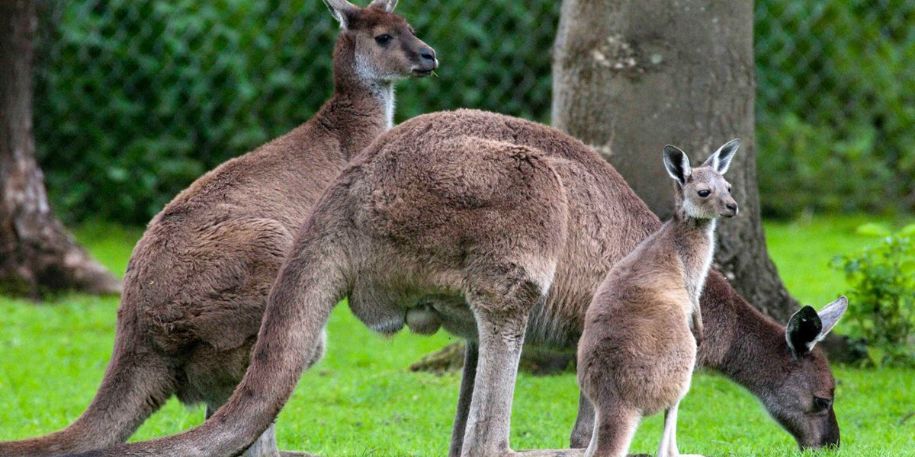Hurry! Become a member and save 20%!
Discover all about the kangaroo birthing cycle

Kangaroo's gestation period
Kangaroos are very interesting animals: they are very active during the night, but they are quite calm during the day. They jump a lot and have a pouch to hold their baby. The birth and growth of this species is not like any other in the animal kingdom!
Kangaroos are bipedal; meaning they move or walk by using two legs and two feet, and in this case, by making big jumps! They can reach speeds of up to 70 km/h! Their enclosed pouch and reproductive system are essential to understanding the birthing cycle of these animals.
Females can raise three baby kangaroos, of different ages, at a time. The reproductive period also varies according to the type of kangaroo involved. Red kangaroos breed during the rainy season so that the young can find food when they become independent from the mother. Eastern grey and western grey kangaroos breed throughout the year, but the baby's birth generally occurs during the summer, so that the baby can become independent by spring.
The courtship and mating period is usually relatively short, but in order for this to happen, the males must fight each other. Kangaroos fight with their front legs - as if they were boxing! Only the most dominant and victorious will be able to mate with more than one female in the same season.
How do kangaroos give birth?
The gestation period of kangaroos is also very short, at least inside the uterus, one of the shortest processes in the animal kingdom! It only takes kangaroo babies between 28 and 33 days to be born. However, baby kangaroos are not very large; after 28 to 33 days in the womb, undeveloped embryos are born measuring only about two centimetres long. These embryos have no hair, and their eyes and ears are still very premature; they need to finish forming!
Despite being very tiny, the newborns move instinctively from the female kangaroo's vagina into their mother's marsupial pouch. Yes, kangaroos, like all other placental mammals, are also born through the female's vagina and have enough ability, despite their small size, to climb up to the pouch to finish developing. You should know that the birth process of kangaroos, i.e., delivery, also happens quite quickly.
The development of the embryo
As newborn kangaroos need to finish developing, they rush into the marsupial pouch once the birth occurs. They do this without any help and simply follow their instincts . In the pouch, the little kangaroo starts to feed from its mother, but it still needs eight months in this pouch to be able to get out of it! After eight months, the little kangaroo will begin to come out of the marsupial pouch, called a marsupium, and start to fend for itself. However, although it may find its food, it is likely to return to the marsupial pouch to continue feeding on its mother's milk.
Another baby kangaroo is in sight!
Once the first kangaroo is born and when it begins to feed from its mother, the mother may become pregnant again, and almost immediately, another embryo starts to develop. What happens to the first kangaroo if it is still feeding?
In this case, a process called embryonic diapause occurs, i.e., the new embryo will have to wait about 235 days before it can be born. However, the embryo does not grow in the uterus; it remains on pause! When the 235 days are over, and the first baby kangaroo can come out of the marsupial pouch, the embryo in the uterus is reactivated. When this second embryo is born and climbs into the pouch, the mother kangaroo can become pregnant again, but in a state of diapause.
That is why it is said that the same female can have up to three offspring simultaneously and at different times: an embryo in the uterus, another one developing in the marsupial pouch, and the first offspring that has already left the pouch and has began to fend for itself. Fun fact: kangaroos that are born and immediately stay in the pouch are known as a joey, and those that leave the pouch are called newborns.
Now you can answer the question: how do kangaroos give birth? You have also learnt about the kangaroo's gestation period. If you want to learn more about these fascinating animals and take a closer look at them, why not pay a visit to Blackpool Zoo? Here, you will be able to walk amongst our beloved red kangaroos, in Wallaby Walkabout.